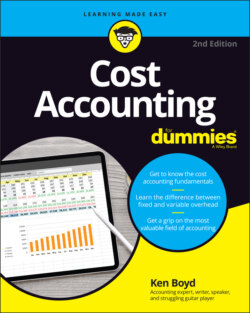Читать книгу Cost Accounting For Dummies - Kenneth W. Boyd - Страница 54
Mulling over consistency
ОглавлениеGAAP allows financial statements readers to make “apples to apples” comparisons. A good example is accounting for fixed assets. Generally speaking, fixed assets must be valued at historical cost, meaning the amount paid for the asset. The cost of the asset includes acquisition cost (the check you write for the asset), plus shipping and other costs required to prepare the asset for use.
Say, for example, that two trucking companies each list ten trucks as fixed assets in the balance sheet, and that all the trucks are the same size. If both firms comply with GAAP, the trucks are valued at historical cost less accumulated depreciation.
OK, now assume that company A’s trucks are listed in the balance sheet at $100,000, while B’s trucks have a value of $200,000. What does this data tell you? On average, A’s trucks are worth less than B’s trucks, and that also means that A’s trucks are older and must be replaced sooner.
Company A will have to invest in new trucks before company B. If you were considering investing in either company, that difference would impact your investment decision. A is going to have to spend money on trucks sooner than B, and that leaves less money for other needs.
If you don’t comply with GAAP accounting now, you should change your accounting as soon as possible. The longer you wait to change, the more difficult it is to convert the accounting records to GAAP. Sure, software packages can do some of the work automatically, but you’ll probably need a CPA firm to clean up the books.
